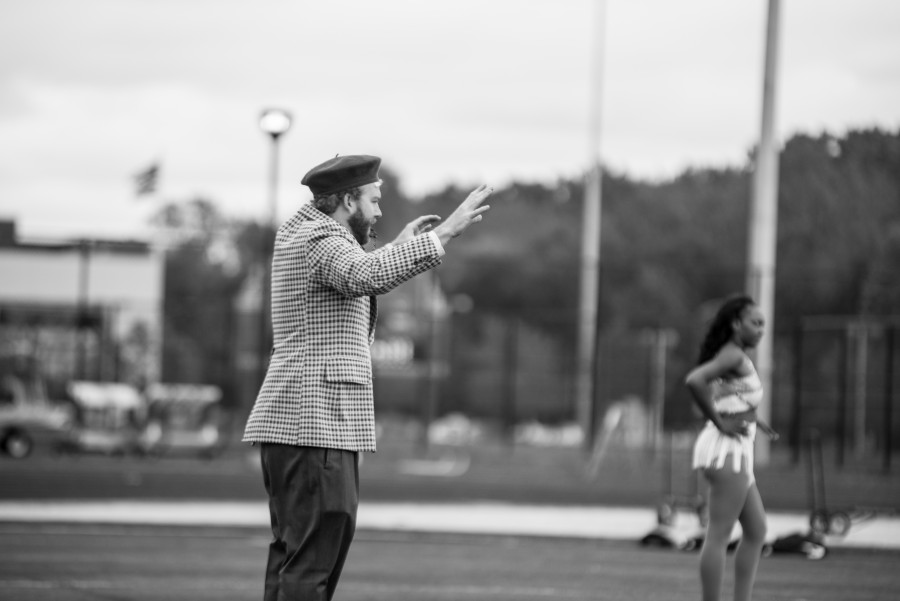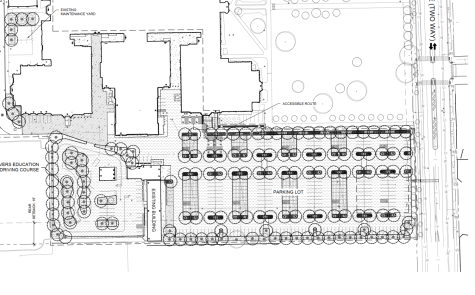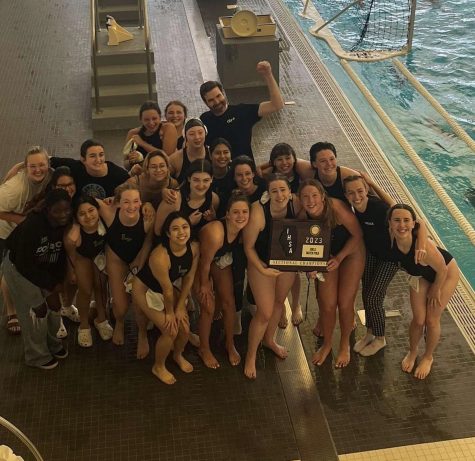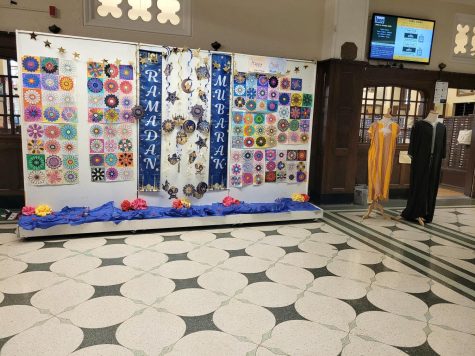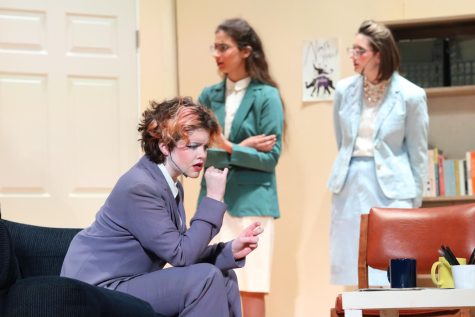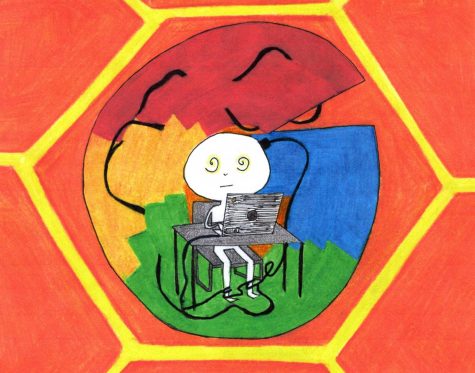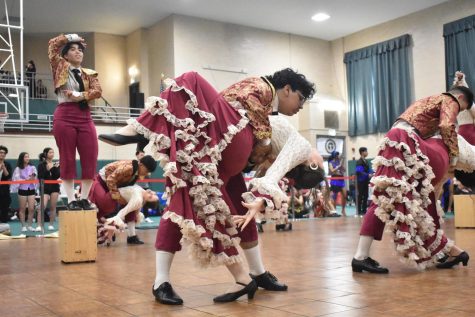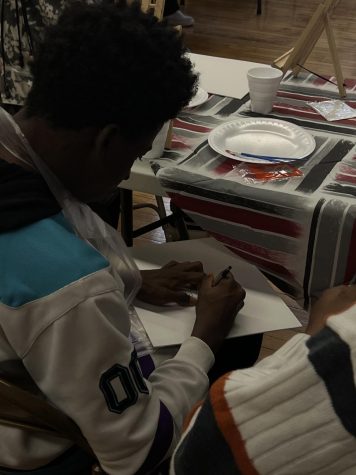‘Go Lane Go’ celebrates its 100-year anniversary
Mr. Flygt, Lane’s band director, wants to bring greater appreciation to school fight song “Go Lane Go”.
December 18, 2015
Every morning, two minutes before the bell rings to signal the start of another school day, “Be fearless and bold for the myrtle and the gold, add laurels to your frame, GO LANE GO!” sounds through the school’s intercoms. As of this year, “Go Lane Go” celebrates its 100 year anniversary, bringing with it more years of pride and some changes to the portrayal of the song in order to keep the spirit this song brings alive.
In 1915, Lane did not yet have a school song, that is, until a student from the graduating class of 1915, Jack T. Nelson, set out to write it. According to his peers and teachers, Jack was “an extraordinary student and assistant conductor of the Lane Orchestra, manager of Glee Club and a very accomplished musician.” The song debuted in 1915 and successfully named Lane one of the very few schools in the area with an original school song.
As of recently, it was brought to the school band director, Mr. Flygt’s, attention, that some changes must be made concerning the school song; it all started at the annual Homecoming pep rally.
“What I noticed was that during the performances, the cheerleaders didn’t sing the entire song; they just sang half of it,” Mr. Flygt said. “They would sing the main verses ‘hit ‘em high, hit ‘em low…go Lane go!’ and they would just stop. Then, in coordination with the cheerleaders, the band plays the song (or half of it) as well, and then they, too, just stop.”
According to Mr. Flygt, as soon as this would happen, all eyes in the crowd would be on the band directors, which includes himself.
“I’ve taught here for a long time and that in particular, has always pissed me off, because it’s not the whole song that they’re singing,” Mr. Flygt said. “And when they look at me after they stop singing, I just can’t help but feel very stupid.”
“Then, in addition to that already frustrating factor, we had some old band directors, who used to teach at Lane, come and physically try and change the song,” he said. “They attempted to alter a few notes of the song in order to be able to give themselves some credit in the writing.”
About 90 % of the student body doesn’t know the entire song due to the misconceptions of the style that this song is written in, Mr. Flygt said.
“It’s very old, but it’s also a genuine, original fight song.” he said. “It’s something that should serve as motivation to pump people up and give them some pride for Lane. But when students hear it, what do they do? Nothing. And it kind of sucks.”
In order to combat this, Mr. Flygt, along with Mr. O’ Brien, has done some experimenting with the way the song is performed at school events.
“With fight songs, if you look at fight songs from other universities or schools, you’ll notice that they are all written in a four-count beat,” Mr. Flygt explains. “However, Lane’s song is in six-eight. Therefore, it’s hard to play it at a faster tempo, without making the song sound strange.”
This analysis of the count to which the song is written to brings up the first experimentation the band directors attempted.
“We tried adding something called tags or extensions, which, essentially, is a song after a song,” Mr. Flygt said. “We’d play the school song then kick it into something faster. For the last two years, we’ve tried the school song with a traditional brass band, which is very uptempo, and with that, throwing in some exciting cadences.”
“Following that, I found a copy of an old, lesser-known version of the school song, the Lane Marching Song,” Mr. Flygt said. “It was written by the Invaders Club, which I don’t really know what that means. This song was written in four-count beat, so it’s much more uptempo; however, the lyrics of this song are really weird and when we attempted it, it didn’t really stick that well. This is mostly due to the fact that the keys needed to play this song are very hard to learn.”
For now, Mr. Flygt and Mr. O’ Brien modified the performance for the band used for basketball games, to due there being more time to practice this method.
“The changes I want to bring concerning the song as of now include, one, changing the drumline of the band, because that part was not very exciting,” Mr. Flygt said. “The second is making everyone in band know the lyrics of the song; so when we finish playing the song, we also sing it outloud and include some choreography with it.
“Part of what I’m trying to do is make the school song more relevant to our everyday lives,” Mr. Flygt said. “I don’t think that people should wait until after graduation to get all nostalgic and care about the song, it’s good to live it in the moment as well.”
Despite Mr. Flygt’s statement about after graduation nostalgia, there are some alumni at Lane that still experience the emotions and positive memories that hearing the school song brings.
Mr. Payano, an alumni from the graduating class of 2006, remembers how it was to hear the song as a student during that time.
“I just remember being in PE class, freshman year; and we had to memorize the school song for a grade,” Mr. Payano said. “At first, no one wanted to do it, we all thought it was dumb. Most students in high school are very rebellious, and I, myself, was no exception. You’d hear the song and be very nonchalant towards it. But afterwards, when you move forward from it, the farther you are away from Lane, the more meaning I think it has.”
Mr. Payano states that the school song reaching its 100 year anniversary is incredible and adds to the historical significance of the school.
“Lane is a storied educational institution, starting back in 1908. It is the first school of its kind, a lot of schools around the country look up to Lane to be the standard and to be the example for the rest,” Mr. Payano explains. “It was built with the idea that students would graduate from here and be in the Chicago Symphony Orchestra, which is why there is such a huge musical program integrated here.”
For Mr. Payano, the song fits in with the theme that Lane is the school of champions and it inspires students to be fearless, to fight and always go for the gold.
“It’s amazing to see alumni come back and at one point, they all stop and sing the song together,” Mr. Payano said. “When you couple that with the incoming students, the song really captures a sense of unity.”

